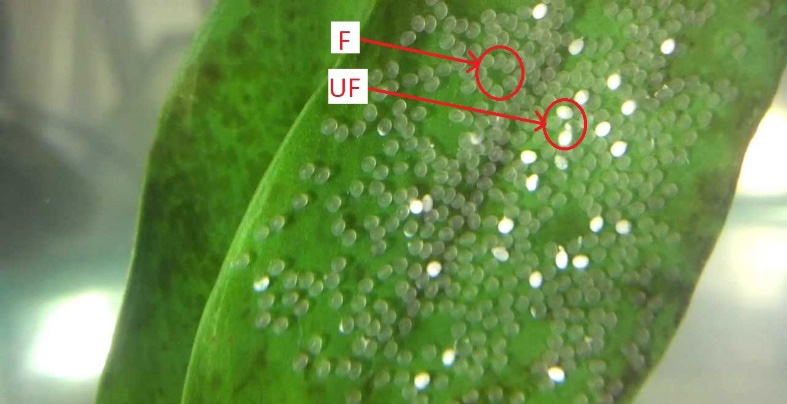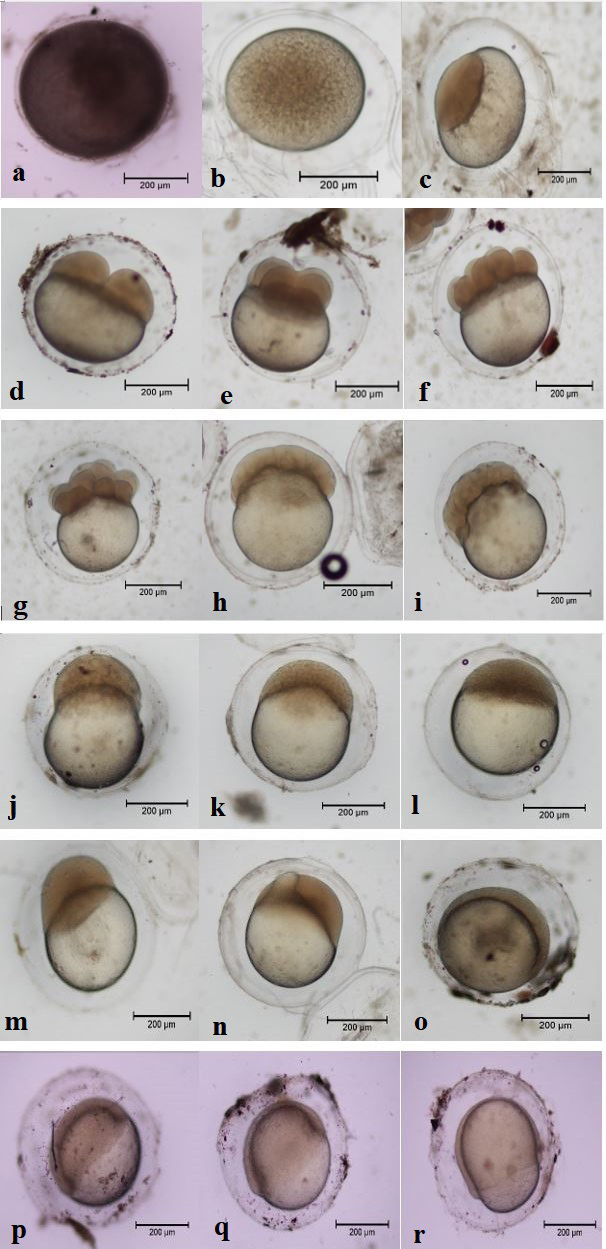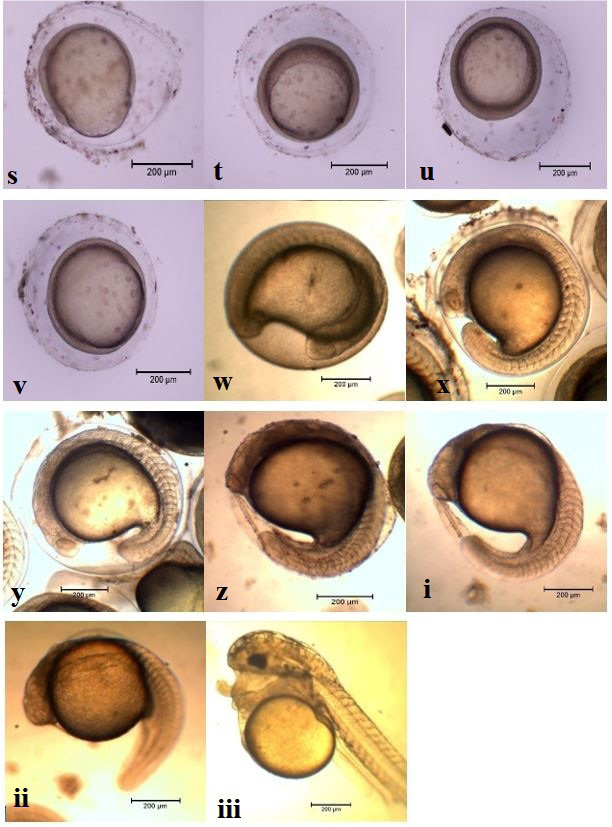Observation of Embryonic and Larval Developmental Stages in Endangered Nona Tengra (Mystus gulio) Induced with S-GnRHa
Observation of Embryonic and Larval Developmental Stages in Endangered Nona Tengra (Mystus gulio) Induced with S-GnRHa
Md. Alal Hossen1, Mohammad Amzad Hossain1*, A.K.M. Munzurul Hasan1,2, Bipresh Das1, Sohel Mian1, Mohammed Mahbub Iqbal1
Fertilized (F) and unfertilized (UF) eggs of M. gulio.
Development stages of M. gulio (a) Unfertilized egg, (b) Fertilized egg, (c) Blastodisc, (d) 2-cell stage, (e) 4-cell stage, (f) 8-cell stage, (g) 16-cell stage, (h) 32- cell stage, (i) 64-cell stage, (j) 128-cell stage, (k) 256-cell stage, (l) 512-cell stage, (m) Oblong stage, (n) Sphere stage, (o) Morula stage, (p) Blastula stage, (q) 60% epiboly, (r) 70% epiboly, (s) 80% epiboly, (t) 90% epiboly, (u) Epiboly complete, (v) Bud stage, (w) Somites formation, (x) Segmentation-1, (y) Segmentation-2, (z) Segmentation-3 (i) Just before hatching, (ii) Newly hatched, (iii) larvae 24 hr larvae.













